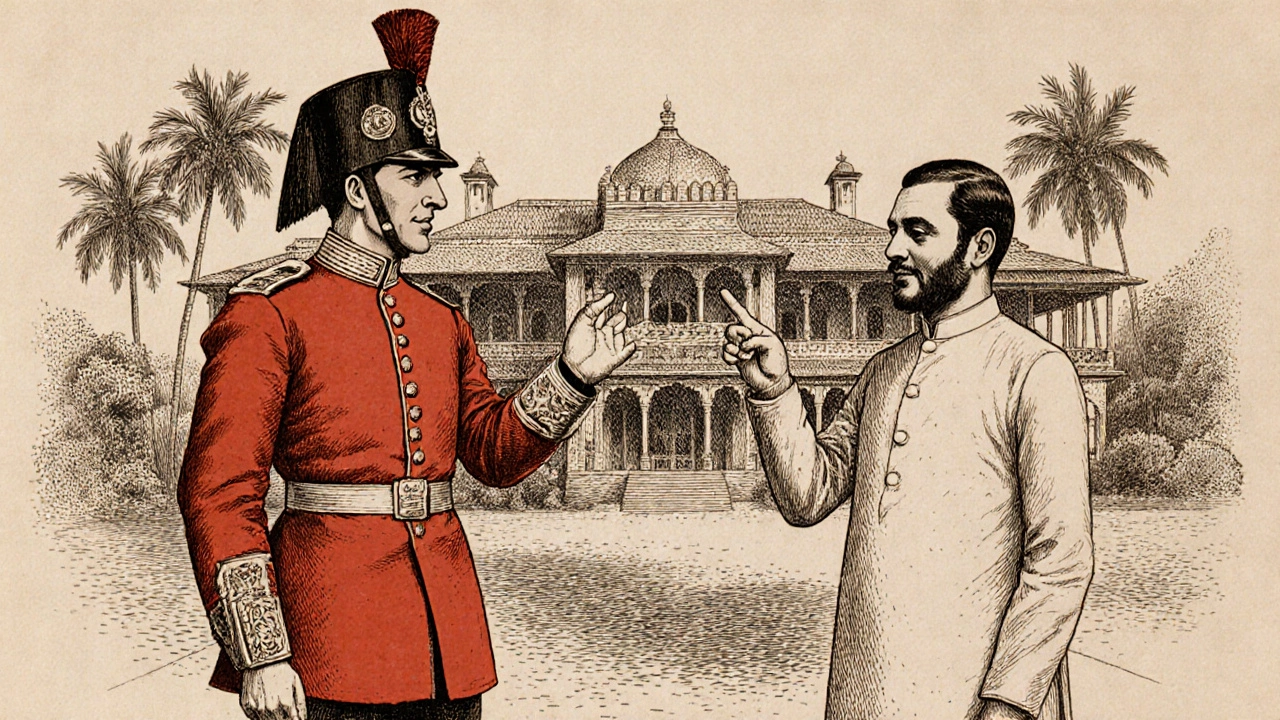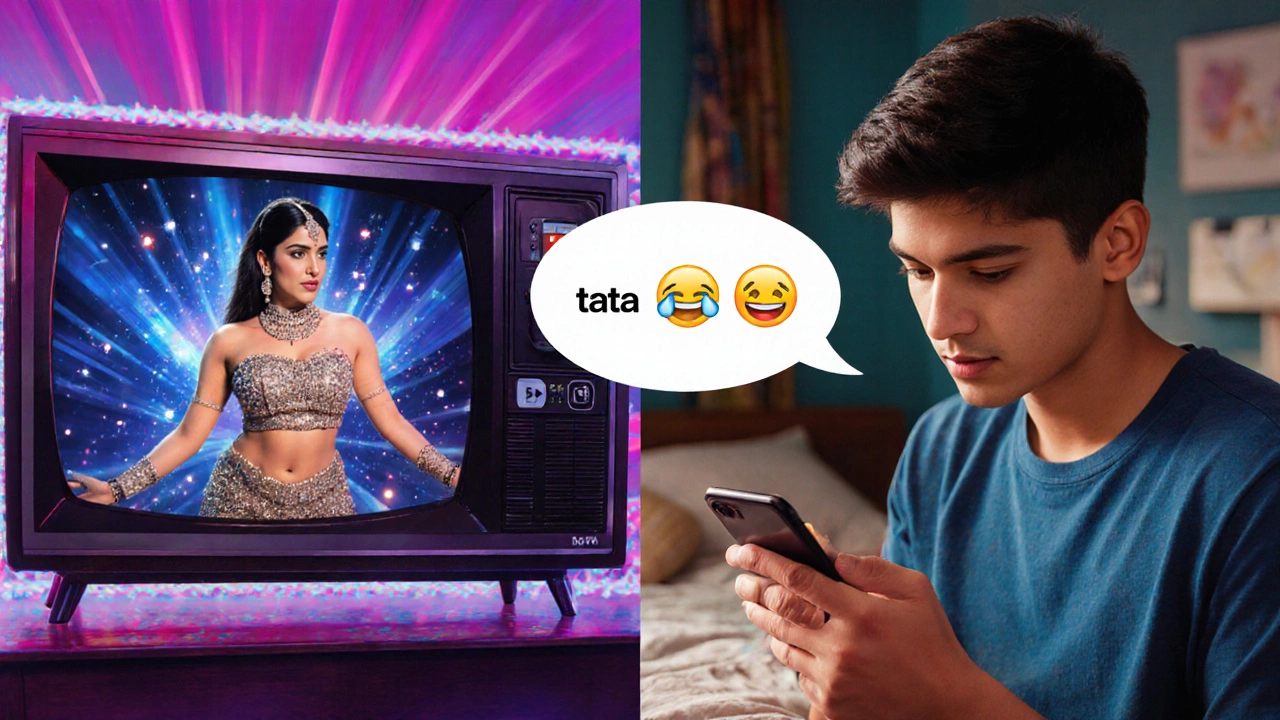Tata vs Bye vs Goodbye Comparison Tool
This tool helps you understand how different farewells are used in India:
- Tata – Casual, friendly, often used in family and social settings
- Bye – Neutral, commonly used in modern, casual contexts
- Goodbye – Formal, used in professional or official situations
Comparison of Farewells
| Farewell | Formality | Origin | Common Regions | Typical Setting |
|---|---|---|---|---|
| Tata | Informal | British "ta-ta" → Indian English | Urban & semi-urban India | Family visits, friends, social media |
| Bye | Neutral | American English | Nation-wide, especially younger speakers | Everyday conversations, texting |
| Goodbye | Formal | Old-English | Across India, more in formal contexts | Business letters, speeches |
| See you | Neutral-to-informal | American English | All regions | When you expect to meet again soon |
Usage Tips
Tata is widely used in informal settings like family gatherings, casual chats, and social media. It's friendly and reflects India's cultural blend with British influence.
Bye is neutral and used universally in modern Indian communication, especially among younger generations and in digital spaces.
Goodbye remains the preferred choice for formal communication, such as in business emails or official letters.
Ever heard an Indian friend wave and say “tata” and wondered why they didn’t just say “bye”? You’re not alone. This little word carries a surprisingly rich history, a dash of colonial influence, and a whole lot of everyday charm.
What tata meaning actually is
tata is a casual farewell used across India, equivalent to “bye” or “see you later”. It’s friendly, informal, and often heard in both spoken conversation and online chats.
The British "ta‑ta" connection
The story starts in the 19th‑century British Empire. British soldiers and administrators regularly used the reduplicated farewell “ta‑ta” - a playful way of saying goodbye. When they arrived in India, the phrase slipped into the local linguistic mix.
Indian speakers, especially those educated in English‑medium schools, picked up the term and adapted its pronunciation to suit native phonetics. Over time, the hyphen disappeared and the word settled as “tata”.

How Indian languages embraced "tata"
India’s linguistic landscape is massive, with Hindi, Urdu, Bengali, Tamil, Malayalam, and dozens of others. Yet the borrowed tata found a home in all of them, mainly because English is a lingua franca in urban areas.
- Hindi speakers often use “tata” after a family visit or a quick chat with friends.
- Urdu users hear it in Bollywood movies and TV shows, reinforcing its popularity.
- South‑Indian languages such as Tamil borrow the term in informal English‑code‑switching.
The word spreads like any slang: through media, schoolyard banter, and now, social platforms.
When and where Indians actually say "tata"
Despite its British roots, today “tata” feels unmistakably Indian. Here’s a quick guide on the usual contexts:
- Family gatherings: After a cousin’s house, you’ll hear a cheerful “tata!” as people head out.
- Friend circles: In coffee shops or on campus, it replaces “bye” for a more relaxed vibe.
- Online chats: On WhatsApp, Instagram DMs, or any messaging app, a quick “tata” wraps up the conversation.
- Media & pop culture: Bollywood dialogues, TV serials, and YouTube vlogs often end with “tata”, cementing it in the public mind.
It’s rarely used in formal business emails; there you’ll still see “Regards” or “Best wishes”.
tata vs bye vs goodbye - a quick side‑by‑side
| Farewell | Formality | Origin | Common Regions | Typical Setting |
|---|---|---|---|---|
| tata | Informal | British "ta‑ta" → Indian English | Urban & semi‑urban India | Family visits, friends, social media |
| bye | Neutral | American English | Nation‑wide, especially younger speakers | Everyday conversations, texting |
| goodbye | Formal | Old‑English | Across India, more in formal contexts | Business letters, speeches |
| see you | Neutral‑to‑informal | American English | All regions | When you expect to meet again soon |

Common misconceptions about saying "tata"
- It’s only used by kids. No - you’ll hear grandparents, office workers, and TV hosts using it.
- It’s a typo for “ta‑ta”. While historically linked, today it’s a distinct Indian slang term.
- It’s exclusive to Hindi speakers. As noted, speakers of Urdu, Bengali, Tamil, and many other languages use it.
Tips for non‑Indians: using "tata" correctly
If you want to blend in, keep these pointers in mind:
- Stay casual - reserve it for friends, not for a senior manager’s email.
- Match the tone - a cheerful smile or upbeat voice makes “tata” feel natural.
- Watch local media - notice when characters on TV says it and mimic the rhythm.
- Don’t overuse - sprinkle it in, not every single farewell.
Playful, friendly, and a tiny nod to India’s colonial past - that’s the charm of “tata”.
Frequently Asked Questions
Is "tata" an Indian word or an English borrowing?
It started as the British slang “ta‑ta” and was adopted into Indian English, becoming a native‑sense farewell over the past century.
Do all Indian languages use "tata"?
While not every speaker uses it, the term is widely recognized across Hindi, Urdu, Bengali, Tamil, Malayalam, and many other regional languages, especially in urban settings.
Can I use "tata" in a professional email?
It’s best to keep professional correspondence formal: use “Regards”, “Best wishes”, or “Sincerely”. Save "tata" for casual chats or after‑hours messages.
Why do some Indians say "bye" and others say "tata"?
It often depends on age, region, and personal habit. Younger people in metro cities may lean toward "bye", while "tata" stays popular among families and older generations.
Is there a difference between "tata" and "ta‑ta"?
Historically, "ta‑ta" was the British form. In India, the hyphen vanished and pronunciation shifted, turning it into the locally loved "tata".
How is "tata" used on social media in India?
You’ll see it as a quick sign‑off in WhatsApp groups, Instagram comments, and TikTok videos-usually with emojis to add extra cheer.
